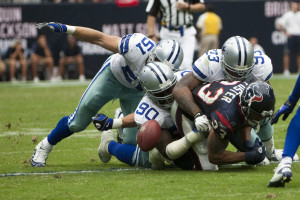Why Posture Matters for Injury Prevention and How You Can Fix Yours
 Good posture helps you feel more confident, gives you more energy, and can even make you appear taller and slimmer. Good posture is also essential for athletes who want to perform their best and avoid serious injuries.
Good posture helps you feel more confident, gives you more energy, and can even make you appear taller and slimmer. Good posture is also essential for athletes who want to perform their best and avoid serious injuries.
Athletes with Posture Issues
Many athletes struggle with genetic posture issues. For example, Usain Bolt, the fastest man on earth, was born with a curvature in his spine that has affected his hamstrings.
Others, like running back Arian Foster and quarterback Tony Romo, have suffered from non-genetic issues like bulging and herniated discs, which have caused them severe back and leg pain.
Good posture can’t completely prevent these issues, especially when they’re genetic. But, improving posture can help those with both genetic and non-genetic posture issues heal faster and avoid additional injuries.
How Good Posture Prevents Injury
Good posture is essential for athletes who want to maintain strength and optimum health on and off the field. Some ways that posture contributes to injury risk (or lack thereof) include:
Less Stress on the Joints
When you stand or sit incorrectly, it’s easy for your muscles to tighten. This tightening, in turn, puts extra stress on the joints. Athletes’ bodies already takes a beating during practices and workouts. To reduce this damage, it’s important to avoid adding stress to the joints by slouching.
Prevents Muscle Imbalances and Compensatory Patterns
In addition to putting excess stress on the joints, it’s also possible to create muscle imbalances (muscles on one side of the body are stronger than others) by constantly walking around or sitting with poor posture.
These muscle imbalances and weaknesses can increases your risk of injury by slowing down reaction time and negatively affecting coordination.
Faster Healing and Long-term Recovery
If you’re already struggling with a sports injury, poor posture can actually slow down the healing process and keep you out of the game longer.
If your muscles aren’t well-balanced, you may have a harder time finding long-term relief from your injuries. Unless you correct the imbalances that contributed to your injury, you’ll eventually wind up back in the same place you were before.
How to Improve Your Posture
At this point, you are probably convinced that good posture is essential if you want to avoid sports injuries. But, what if you have less-than-ideal posture right now? Keep these tips in mind, and you’ll see your posture improve in no time.
Sit Less
It’s easy to find yourself flopping on the couch or crashing directly into bed after a long day of training. It is important to give your muscles time to rest, but you should also try to avoid excess sitting throughout the day.
For you, this could mean using a standing desk or taking breaks throughout the day to go for quick walks.
Stretch the Front of the Body
In addition to sitting less, you should also focus on stretching the muscles in the front of the body, including the chest, biceps, forearms, and hip flexors.
It’s especially important to improve hip flexor mobility since hip injuries are becoming increasingly common, especially in basketball players.
Strengthen “Pulling” Muscles
At the same time that you stretch the front body, you should also focus on strengthening the “pulling” muscles, the ones on the backside of the upper body. This includes the upper back, biceps, and shoulders.
Good exercises to include in your strength training routine include seated and standing rows, lat pull downs, and pull-ups.
Use Tools that Promote Good Posture
There are a number of tools out there that can help you maintain a normal spinal curvature and improve your posture.
Up to 20 percent of sports injuries involve the neck or lower back, but the following tools can help you avoid putting pressure on either of these areas:
-
Lumbar support pillows
-
Seat wedges
-
Posture correcting braces — the kind you would use for recovery from a neck injury
-
Posture-enhancing clothing to cue changes in the posture muscles and strengthen the core
These tools are great aids when you’re working on changing your posture. But, remember to combine them with the other tips mentioned above for maximum results.














